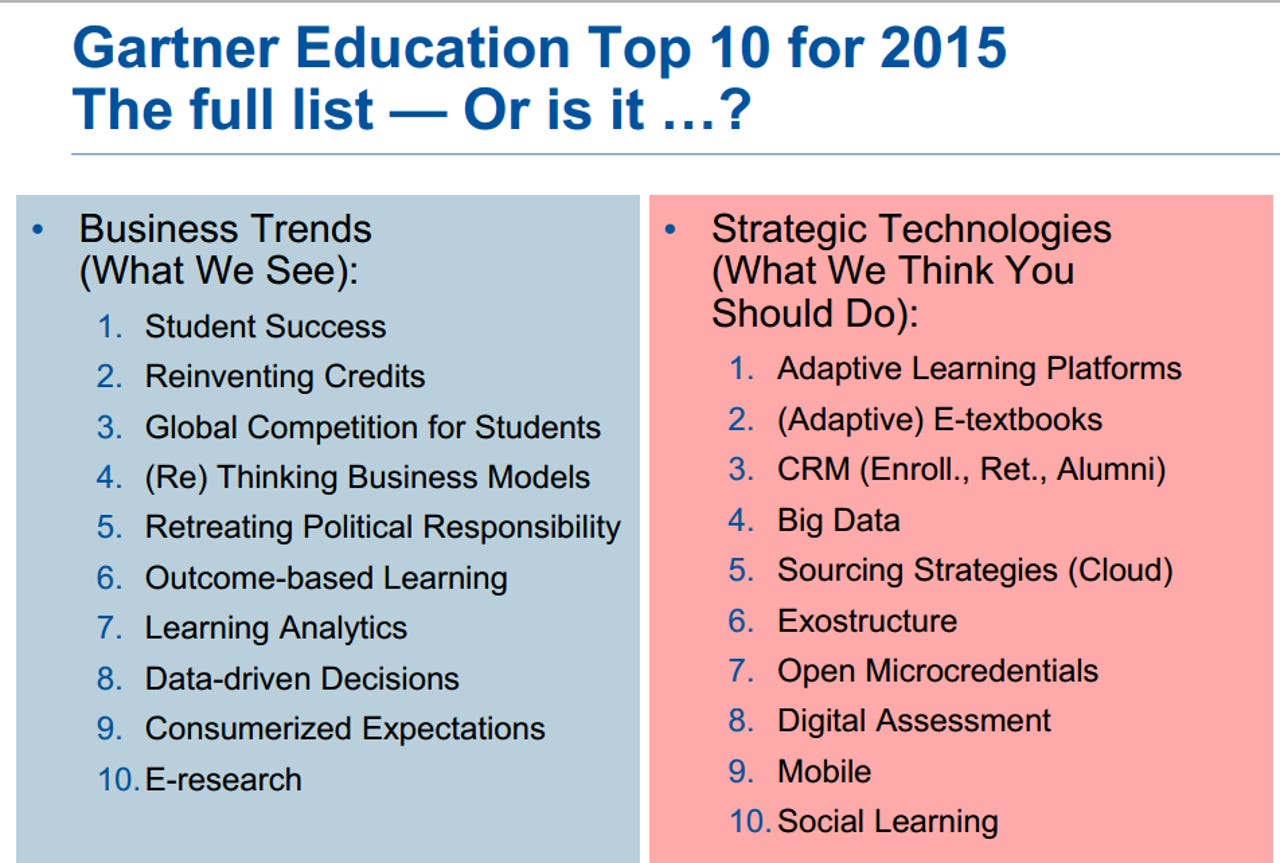Education's coming restructuring: How much will IT really help?

ORLANDO — The education industry, primary, secondary and post-secondary, is increasingly looking toward information technology as a way to revamp and restructure how these institutions operate. The big question is how much technology can realistically expect to help.
That question was front and center as Gartner analysts did their industry tour Sunday at the Symposium/ITxpo in Orlando. Transformation was the key buzzword, but education is the industry that may need the biggest overhaul. In the U.S., there's an aging population, a student debt load that's going to explode on the economy, and skill shortages. Students aren't likely to fall into traditional buckets.
Jan-Martin Lowendahl, an analyst at Gartner, noted in a presentation that "more people will need to reskill more often." Students will be older and nonformal learning will dominate. Meanwhile, education will go international. Toss in those business model issues with creaky IT systems and processes and you can easily see why most tech vendors are chasing education institutions with their versions of quick fixes.
Here's a look Gartner's priority list for education in 2015.

Featured
Picking between the two sides of Lowendahl's list it's worth highlighting the following:
- Data-driven decisions, analytics and outcome-based learning. Institutions to date have followed the money, but it's likely that they'll get paid on outcomes at some point in the future whether it's student demand or actual government requirements. The problem: The systems aren't in place to track these students. That reality is one reason that Workday is so hot for the education market. Workday is primary a human resources software expert, but its education efforts could make it more like a student relationship management player.
- Big data. Institutions already have computer science departments and data jockeys to utilize big data better. However, education is silo-ed. A culture change is required to hand education business problems over to the brainiacs they recruit. Talk about a fun student project.
- The business model issues may eclipse anything IT can do. As I peruse Lowendahl's list that includes things like adaptive textbooks and mobile learning, I can't help but think that these technologies are nice to have, but not transformational. Education's business model has serious issues and there are revenue, funding and cost issues. IT can help, but it certainly won't be a magic elixir for the real heavy structural issues ahead.